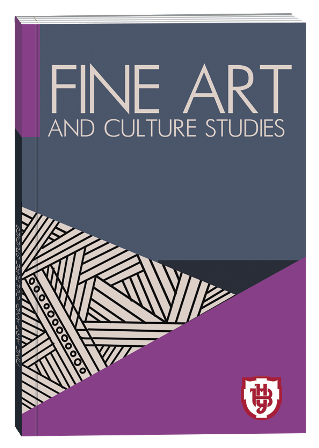«CHILDISHNESS» OF MUSICAL-RHYTHMIC PRACTICE METHODS IN SEARCH OF METHODOLOGICAL DEPTH
DOI:
https://doi.org/10.32782/facs-2025-4-21Keywords:
musical art, rhythmics, rhythmology, rhythmo-intonation, teaching methodology, cognitive perception, phenomenology of rhythmAbstract
The aim of this article is a comprehensive reflection on the epistemological and methodological foundations shaping the concept of rhythm in music education practice, as well as an analysis of the deeper levels of musical thinking. The research methodology is based on an interdisciplinary approach encompassing the philosophy of time, cognitive sciences, pedagogy, musical phenomenology, and studies of renowned methodological systems (Émile Jaques-Dalcroze, Zoltán Kodály, Carl Orff, Shinichi Suzuki, Edwin Gordon, among others). Critical-analytical and hermeneutic methods are applied to reveal the ontological basis of rhythmic thinking. The scientific novelty lies in rethinking rhythm as a phenomenon of internal, pulsating time, inseparably linked with bodily, intonational-semantic, and aesthetic experience. The concept of “rhythmology” is proposed as an alternative to reductionist approaches common in children’s music pedagogy. The conclusions highlight the need to abandon simplified and abstract methods, often justified by “child accessibility,” in favor of a post-methodological mode of thinking. In this approach, the teacher is not confined by rigid system boundaries but flexibly integrates elements of various methods based on critically reflected knowledge. The study addresses a methodological crisis in the field of teaching musical rhythmics, caused by the reduction of rhythm to external counting structures, sound imitation, and schematic graphic representations. It emphasizes that such an approach fails to reveal the true artistic, temporal, and intonational nature of the rhythmic phenomenon, turning music education into mechanical reproduction detached from the psychological experience of rhythm-time as a meaningful category. The article aims to identify the cognitive and philosophical premises that define the perception, interpretation, and teaching of rhythm theory as an integral part of musical experience. Special attention is given to pedagogical strategies that can correct conceptual distortions or foster the development of a genuine sense of time and intonational sensitivity. Rhythm should be mastered not through mechanical counting or reproduction of notation patterns, but as a living experience of time ‒ fluid, intonationally rich, and aesthetically organized musical movement.
References
Artıktay, G. Cognitive neuroscience and music education: Relationships and interactions. Journal of Music and Neuroscience, 2022. 10 (1). Pp. 45–60.
Brainin, V. The main principle of mastering rhythm in the proposed system URL: https://brainin.org/Method/Musical_Thinking_Alternative_discipline_EN.htm (дата звернення: 22.07.2025).
Dewey, J. Experience and Education. New York: Macmillan, 1938. 91 p.
Gordon, E. A Music Learning Theory for Newborn and Young Children. Chicago: GIA, 2013. 216 p.
Jaques-Dalcroze, É. Le Rythme, la musique et l’éducation. Paris: Fischbacher, 1920. 234 p. [In French].
Juntunen, M.-L. Dalcroze Eurhythmics – a method, an approach, a pedagogy, or a philosophy? Le Rythme, 2019. Pp. 49–59.
Kodaly, Z. Foundations of music education. Boosey & Hawkes, 1974. 98 p.
Levitin, D. This Is Your Brain on Music: The Science of a Human Obsession. Dutton, 2006. 336 p.
Orff, C. Orff-Schulwerk: Music for Children – Teacher’s Manual. Tutzing: Hans Schneider Verlag, 1960. URL: https://pdfcoffee.com/orff-schulwerk-pdf-free.html (дата обращения: 01.08.2025).
Small, C. Musicking: The Meanings of Performing and Listening. Wesleyan University Press, 1998. 240 p.
Suzuki, S. Nurtured by love: The classic approach to talent education. Alfred Music, 1969. 112 p.
Zioga, S. Memory, attention and creativity as cognitive processes in musical performance. Attention, Perception, & Psychophysics, 2024. 86(2). Pp. 234–250.








